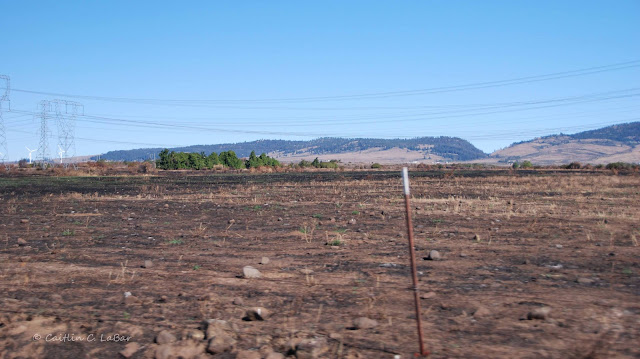This is the time of year when I spend more time working on my butterfly mapping projects (and forgetting to work on my blog, sorry for the sparse posts!). Now that I'm mostly settled in for the holidays and not traveling hither and yon chasing butterflies, it's time to start mounting all the specimens I've collected over the summer and catch up on some of my projects. I thought I would share a little about the process of what I do; this post will be about how I map butterfly locations and ranges, and later I will post an illustrated guide of how to preserve butterfly specimens.
There are several ways to illustrate the range of butterflies. First, you must decide whether you will map them by point location or general location.
Point locations are more accurate of course, because they show the exact location where a butterfly was observed. If there are many records, patterns may begin to emerge that can be useful in studying the habitat and range of the butterfly, as well as identifying hotspots - areas with a high density of individuals. A single point away from the main cluster of points might indicate a butterfly that has strayed from it's normal range, or it may identify an area that is under-sampled and should be surveyed to determine if there are more butterflies in that area. Mapping point locations is limiting however, as many records (especially historic records) might not have exact location information. It is also more difficult to illustrate the range of the butterfly at a large scale, such as on a world map, because areas with single or few points might not show up as well.
General locations can be mapped at a scale almost as detailed as a point map, or as broad as what you frequently see on world maps. For example, the size of North America maps that you see in field guides is quite small, so if a boundary line is several miles from where it should be on the ground, the difference would only be a fraction of an inch on the map, therefore the cartographer (person making the map) doesn't need to worry about being very precise. If a map is smaller scale, the cartographer must spend more time drawing accurate ranges. For some maps, illustrating species locations by a standard set of data is beneficial because it reduces the need for the cartographer to interpret and draw the range location. For example, British studies have used a grid of 1 kilometer squares to survey and map butterfly locations, and many North American birders use a township grid for their surveys. Because sections (1 square mile) and townships (6x6 sections) are a surveyed grid system in most of the USA, and the data for most states is available for free download to be used in GIS (geographic information system, a mapping program), this grid system is great for mapping general butterfly locations. The sections can also be subdivided into quarter sections or smaller, providing a wide range of possibilities for mapping records.
 |
| Map of Lycaena heteronea (Blue Copper) by quarter-section squares in the Sinlahekin Wildlife Area. |
Using GIS to make maps provides nearly endless possibilities, and there are many ways to obtain or create the features that make up the map. A lot of the basic features, such as major roads, lakes, rivers, cities, and the township grid are available through county, state, or departmental websites, often for free download. To make a map like the one above, I downloaded the DEM (digital elevation model) for this area and created a hillshade (the topographic shading) using a tool in GIS. I also obtained a 2011 aerial photo of Okanogan County, which I used to digitize all the lakes, ponds, wetlands, streams, and roads in this area of the SWA. Digitizing (drawing features on the computer) takes a lot of time, but it allowed me to create the most accurate features for my map, since most of the data I had was fairly rough and didn't quite match up with the hillshade. Once all the features are complete, I format the labels and experiment with different colors and shading to make everything as easy to read as possible. The final step is adding the butterfly records for each species, which actually takes longer than a lot of the other digitizing, because of the time it takes to compile all the records and verify the information, before adding it to the map. The finished product is worth the effort though! Now when I visit the Sinlahekin, I have been able to focus my time on areas with no mapped records, in order to produce the most accurate map possible.



































































